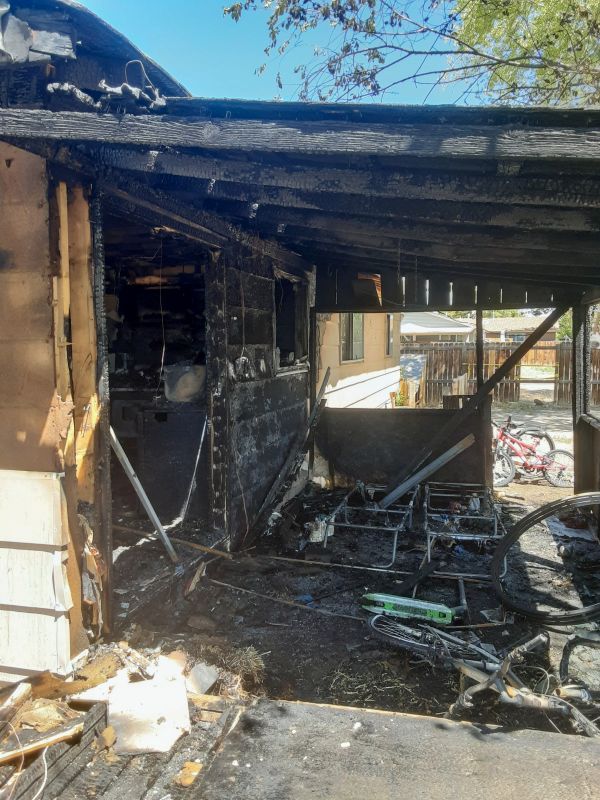Leading Fire Restoration Supplies To Bring Properties Back to Life
Utilize high-quality products designed specifically for fire damage restoration to ensure thorough and lasting repairs.
 Fire restoration products are essential tools and materials used to address the aftermath of fire damage in residential and commercial properties. These products help mitigate further deterioration, remove soot and smoke residues, and restore the structural integrity and appearance of affected areas. Proper selection of fire restoration supplies can significantly influence the efficiency and effectiveness of the cleanup and rebuilding process. From specialized cleaning agents to structural repair materials, a comprehensive approach ensures that properties are safely and thoroughly restored.
Fire restoration products are essential tools and materials used to address the aftermath of fire damage in residential and commercial properties. These products help mitigate further deterioration, remove soot and smoke residues, and restore the structural integrity and appearance of affected areas. Proper selection of fire restoration supplies can significantly influence the efficiency and effectiveness of the cleanup and rebuilding process. From specialized cleaning agents to structural repair materials, a comprehensive approach ensures that properties are safely and thoroughly restored.
Top Overall Option
Comprehensive Fire Damage Restoration Kit
A versatile kit that includes a selection of cleaning agents, odor neutralizers, protective gear, and basic repair materials. Designed to provide a complete set of tools for addressing various stages of fire damage cleanup and restoration, this kit offers convenience and broad applicability for both professionals and DIY restorers.
Types of Products For Fire Restorations
Soot and Smoke Cleaners
Specialized cleaning solutions formulated to remove soot and smoke residues from surfaces and fabrics.
Odor Neutralizers
Products designed to eliminate persistent smoke odors from indoor environments.
Fire-Resistant Drywall
Building materials that resist ignition and help contain fire spread during restoration.
Sealants and Primers
Used to seal surfaces affected by smoke and soot, preparing them for repainting or refinishing.
Structural Reinforcement Materials
Includes fire-resistant beams, brackets, and supports to restore structural integrity.
Moisture Control Equipment
Dehumidifiers and drying fans to remove excess moisture and prevent mold growth.
Protective Gear
Respirators, gloves, and coveralls to ensure safety during cleanup and repair tasks.
Fire-Resistant Paints and Coatings
Paints formulated to resist ignition and provide additional fire protection.
Water Extraction Equipment
Heavy-duty pumps and vacuums used to remove water used during firefighting efforts.
Electronics and Appliance Covers
Protective coverings to shield electronics from soot and smoke damage.
Fire-Resistant Insulation
Insulation materials that resist high temperatures and help prevent fire spread.
Cleaning Cloths and Brushes
Tools for manual cleaning of soot and residues from various surfaces.
Air Purifiers with HEPA Filters
Devices to improve indoor air quality by capturing airborne soot and smoke particles.
Fire Damage Repair Adhesives
Strong adhesives suitable for repairing damaged structures and surfaces.
Smoke Damage Encapsulation Products
Sealants used to contain smoke residues and prevent odors from escaping.
Popular Choices
Widely used for quick cleaning of soot from walls and furniture.
Effective for neutralizing persistent smoke smells in indoor spaces.
Commonly selected for rebuilding fire-affected walls and ceilings.
Popular for controlling moisture after fire suppression efforts.
Essential safety equipment for workers during cleanup and repairs.
Frequently used to secure surfaces and prevent further fire spread.
Commonly employed to remove water from firefighting and cleanup.
Popular for improving indoor air quality during restoration.
Often chosen to contain residual smoke odors.
Used frequently in rebuilding efforts for added fire protection.
Widely used for manual soot and residue removal.
Commonly applied to neutralize lingering smoke odors.
Popular for finishing walls with added fire resistance.
Frequently used for structural repairs and surface sealing.
Standard safety gear for workers involved in restoration.
In fire restoration, the focus often begins with soot and smoke removal. Products such as cleaning agents, degreasers, and odor neutralizers are designed to penetrate surfaces and eliminate residues that can cause lingering odors or health concerns. Structural repairs may involve the use of fire-resistant drywall, sealants, and reinforcement materials to ensure safety and durability. Additionally, moisture control products like dehumidifiers and drying equipment are crucial to prevent mold growth and further damage caused by water used during firefighting efforts.
Choosing the right products depends on several factors, including the extent of damage, materials involved, and specific restoration goals. Proper safety gear, including respirators and gloves, is also vital to protect workers from hazardous residues. A well-rounded inventory of fire restoration supplies can streamline the recovery process, reduce costs, and help property owners and restoration professionals achieve optimal results efficiently. Whether tackling minor smoke stains or extensive structural repairs, having access to a broad range of reliable products is key to successful fire damage remediation.
Key Buying Considerations
- Extent of fire and smoke damage to determine the scope of needed products.
- Type of surfaces affected, such as wood, drywall, fabrics, or electronics.
- Effectiveness of cleaning agents in removing soot and odors without damaging surfaces.
- Fire resistance ratings of building materials used in reconstruction.
- Compatibility of sealants and coatings with existing surfaces.
- Availability of safety gear and protective equipment for workers.
- Moisture control capabilities to prevent mold and secondary damage.
- Ease of use and application methods for cleaning and repair products.
- Durability and long-term performance of repair materials.
- Indoor air quality improvement options like HEPA air purifiers.
- Budget constraints and cost-effectiveness of product selections.
- Environmental conditions of the property, such as humidity and temperature.
- Compliance with local building codes and fire safety standards.
- Availability of comprehensive kits versus individual products.
- Reputation and reviews of product brands and suppliers.
